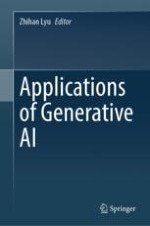2024 | OriginalPaper | Buchkapitel
Generative AI to Understand Complex Ecological Interactions
verfasst von : Hirn Johannes, Sanz Verónica, Verdú Miguel
Erschienen in: Applications of Generative AI
Aktivieren Sie unsere intelligente Suche, um passende Fachinhalte oder Patente zu finden.
Wählen Sie Textabschnitte aus um mit Künstlicher Intelligenz passenden Patente zu finden. powered by
Markieren Sie Textabschnitte, um KI-gestützt weitere passende Inhalte zu finden. powered by
